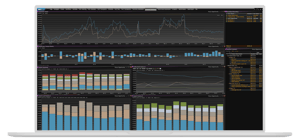Nearly three months ago, the Securities and Exchange Commission’s (“SEC”) announced the Proposed Rule on Reporting Threshold for Institutional Investment Managers, which proposes an amendment to raise the threshold for reporting specified equity securities on Form 13F from $100 million to $3.5 billion. In this post, we speak to Gygmy Gonnot, Head of Research at Vidrio, about the benefits and shortcomings of 13F disclosures, and the potential impact of the amendment, should it be enacted.
**************************************************************************************
Vidrio Financial: The question of thresholds aside, what is the overall value of 13F disclosures?
Gygmy Gonnot: The value of 13F disclosures is the public availability of holdings data that can be scraped from the web and normalized for a view of large holdings across the management companies in which those allocators are investing. However, there is a big distinction between holdings at the MANAGEMENT COMPANY LEVEL vs. at the FUND LEVEL
VF: Why does that distinction matter?
GG: While there is of course a great upside to getting inexpensive management level holdings data, the benefit is primarily to get a sense of the largest position at the management company level, namely in listed equity securities. Therein lies the downside of Form 13F disclosures: the reporting is only at the management company level. This means even if a management company has different funds, reporting obligations are not required at each of those individual fund levels but rather at a high level across all funds.
VF: So, if you are an institutional investor with a large holding at a particular fund manager, you can’t get a clear picture of the specific funds to which those holdings have been allocated?
GG: Correct. A fund company with multiple funds does not have to disclose at the detailed fund level, which means allocators will see only a summary view at the management company level. Also, 13Fs are only helpful for very specific hedge fund strategies. Disclosures do not include short positions, OTC derivatives, non-listed securities, etc. Further, the frequency of new data is limited, given that disclosures are only available on a quarterly basis.
VF: Whether the threshold is raised or not, allocators should be questioning the true benefit of the so-called transparency offered by 13F filings. Is that fair to say?
GG: Yes. Whether the requirement raises the current $100M AUM threshold or not, there is the aforementioned lack of granularity offered by 13F disclosures, namely that they are primarily for equity holdings, and only at the management company level. But also, investors who have allocated to smaller and/or emerging managers – the benefit being that these managers can remain nimble by staying small and therefore have a competitive advantage – are often under $100M. It should also be noted that many international investment advisors (outside U.S. jurisdiction) are also not required to file.
VF: Making it a challenge to access info for these well-established, but smaller and or foreign funds?
GG: Yes. And of course, that could end up being true for a much larger pool of funds, should the threshold be raised.
VF: Interestingly, the Managed Funds Association published a comment letter just last week urging the SEC to further consider the impact of significantly reducing the number of firms that would have to disclose their holdings, citing the costs of losing access to the publicly available information.
GG: Indeed – a surprising source of opposition. One would think that the SEC would be in high favor of more, rather than less transparency, whereas the larger hedge funds would welcome an increased threshold and therefore a more opaque shroud to prevent the street from trading against them. It is certainly an interesting turn of the tables.
VF: Yes, and while it will be interesting to see on which side of the table the decision falls, there is a bigger picture for some institutional investors to consider, particularly those investors allocating to external fund managers, such as Vidrio’s clients. It would seem the nuances are much larger than the question of threshold:
- 13Fs are only quarterly, only reported at the management company or total firm level, and mostly include long positions in listed securities
- So, allocators may not get the granularity they need from 13F disclosures
- This means that many must rely on risk reports directly from the external managers, which are often still very high-level without look-through on underlying assets. This adds a second nuance: potential bias.
There are, of course, better options. Allocators can obtain holdings files independently, such as from a third party administrator, which would offer a lot more granularity on exposure and risk and more accurate information into the specific fund products where investments have been allocated, vs. only at the overall firm level. Vidrio does this now on a monthly basis for most clients, and more frequently upon request from clients and depending upon availability from specific fund managers.
 Further, Vidrio collects the entire spectrum of securities within a fund’s portfolio: long, short, derivatives and non-listed securities. This gives our clients a more accurate and timely picture of both exposure and risk for the actual product they are invested in, rather than limiting them to a view of only the largest positions at the overall management company level. The end result is a best practice solution for due diligence and ongoing monitoring, including independently sourced data that is processed more frequently, arming our clients with more data points and therefore more accurate, timely and detailed information than what can be found within 13F disclosures alone.
Further, Vidrio collects the entire spectrum of securities within a fund’s portfolio: long, short, derivatives and non-listed securities. This gives our clients a more accurate and timely picture of both exposure and risk for the actual product they are invested in, rather than limiting them to a view of only the largest positions at the overall management company level. The end result is a best practice solution for due diligence and ongoing monitoring, including independently sourced data that is processed more frequently, arming our clients with more data points and therefore more accurate, timely and detailed information than what can be found within 13F disclosures alone.







